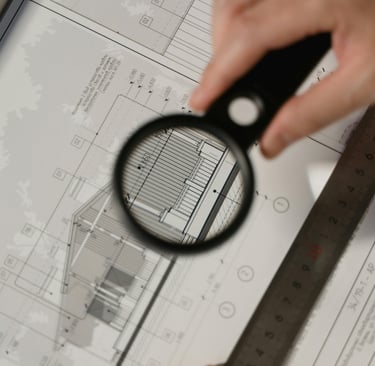Inspecting the Inspectors
Behind every door, there's a story... and a to-do list. Master the art of inspections with a humorous twist as we explore how to spot issues, stay thorough, and keep everyone on their toes!
MANAGER'S CORNERBLOG
12/2/20243 min read
The Art of Inspections


Welcome to the world of inspections, where no crack goes unnoticed, and every fire extinguisher gets its moment of fame! As a building manager, your job isn’t just about keeping things in check—it’s about doing it with flair. Let’s dive into what makes inspections not only essential but also (dare we say it?) kind of fun.
1.Pre-Occupancy and Post-Occupancy Inspections
Before and after tenants move in, it’s your time to shine. These inspections are like the opening and closing acts of a show. You’re the one making sure the stage is set for a smooth performance and wrapping it all up with a final bow. Whether it’s checking for scuffed floors or testing the lights, you’re there to make sure everything’s in tip-top shape.
2.Detailed Inspection Reports for Management
Your reports are more than just paperwork—they’re a work of art! Each detail you include helps paint a picture for management, making sure they know exactly what’s going on. From the tiniest leak to the grandest repair, your reports are as comprehensive as a bestseller (without the plot twists).
3.Identifying Potential Safety Hazards
Channel your inner Sherlock Holmes as you hunt for safety hazards. Whether it’s a loose handrail or a slippery floor, you’ll uncover the dangers lurking in the shadows. Your keen eye and quick thinking keep the building safe, ensuring that everyone can live without fear of a surprise tumble.
4.Verifying Fire Extinguishers and Alarms
When it comes to fire safety, you’re the hero of the day! Checking fire extinguishers and alarms is like being in an action movie, but with less running and more paperwork. You make sure these life-saving devices are always ready to go, just in case.
5.Checking for Water Damage and Signs of Mold
Water damage and mold? Not on your watch! Your inspections are like a crime scene investigation, hunting down the culprits before they can cause chaos. You’ll keep the building dry and mold-free, ensuring everyone breathes easy.
6.Inspecting Common Areas for Cleanliness and Safety
From the lobby to the laundry room, you’re the guardian of common areas. Your inspections ensure these spaces are clean, safe, and welcoming. After all, first impressions matter, and you make sure they’re always positive.
7.Verifying Compliance with Building Codes and Regulations
Building codes might seem dull, but not to you! You’re the building’s legal eagle, making sure every regulation is met with precision. Your attention to detail keeps the building in compliance and out of trouble.
8.Reporting Structural Issues to Management
When something’s amiss, you’re the first to know. You report structural issues like a seasoned news anchor—clear, concise, and straight to the point. Management relies on you to keep them informed, and you never disappoint.
9.Ensuring Proper Signage for Emergency Exits
Emergency exits are serious business, and you’re the sign czar. You make sure every exit is clearly marked, leading the way to safety. In a crisis, those signs are like golden tickets, and you’ve got them covered.
10.Following Up on Corrective Actions
After an inspection, the work isn’t done until the corrections are made. You’re the taskmaster, ensuring every issue is resolved. It’s like checking off a to-do list, only with more satisfaction when the job’s well done.
Stay Tuned for More: Security is Next!
Inspections might be about spotting the small stuff, but up next, we’re going big! The next blog will tackle Security—because keeping a building safe is more than just locking the doors. So, buckle up and get ready to dive into the world of building security with the same humor and insight you’ve come to love!


